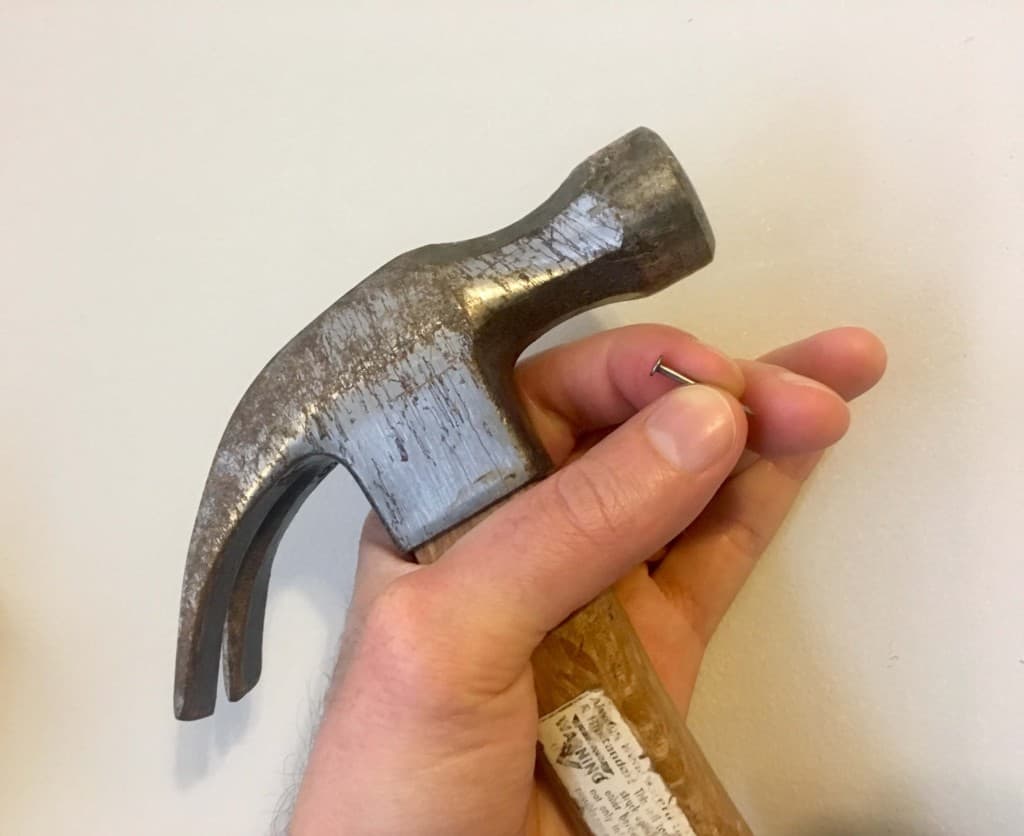
When you rent an apartment, you will probably want to make it feel like home. One way you can do that is to hang pictures and other things on the walls. But before you grab your hammer, you might wonder, can you put holes in your apartment walls?
You can generally put small holes in your apartment walls, as long as you fix the holes before you move-out. Otherwise, you will likely have to pay for damages or surrender your security deposit. Each lease is different, check your specific requirements to make sure you’re compliant.
While that may seem like a simple answer, understand that there are nuances to this. In this article, we’ve simply compiled the general rules that we’ve learned from renting 8 different apartments over the past several years.
To make things clearer, let’s take a look at 3 of the top reasons why you might want to put holes in your apartment walls, as well as the ways in which you can either repair or avoid holes. We’ll also touch-on security deposits and how they work. Let’s get started!
Disclaimer: This post contains affiliate links. This means I may earn a commission should you choose to make a purchase using my link
Table of Contents
3 Reasons for Holes in the Wall
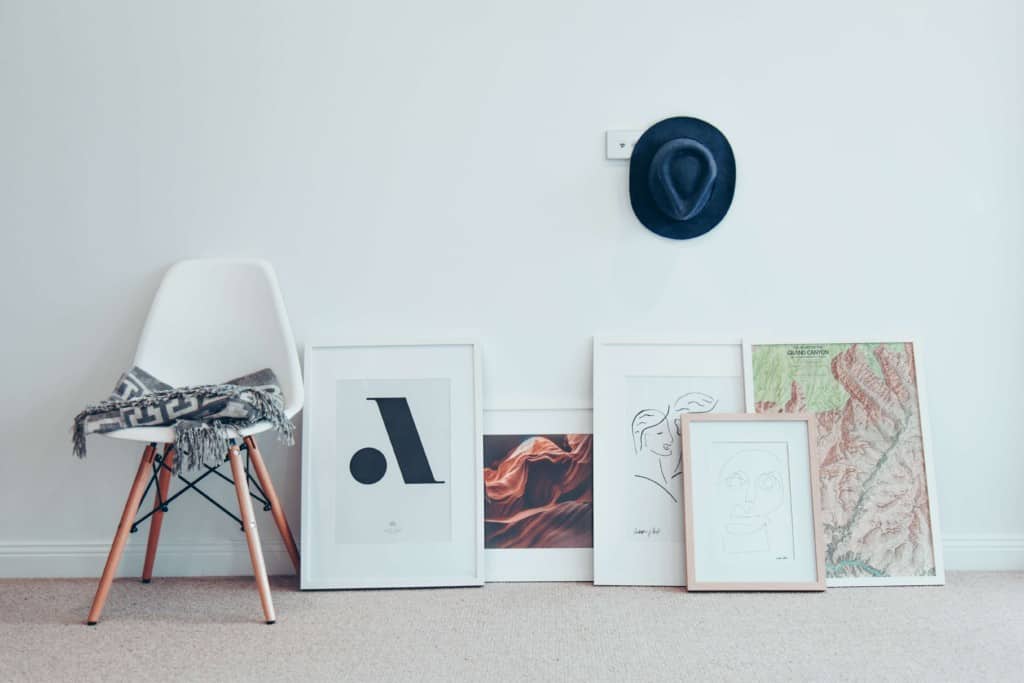
1. You Want to Hang a Picture
Perhaps the most common reason you would want to put holes in your apartment walls is to hang pictures or other wall decorations. This is a very legitimate reason. Hanging pictures, shelves or other decorations will help personalize your space to who you are.
The typical method for hanging pictures is to drive a few small nails into the wall. And, of course, this will result in holes in the wall.
In my opinion, it’s no longer necessary to use nails for small wall ornaments or picture frames, unless the frames are truly massive. That’s because we now have adhesive fasteners like Command Strips, that can do the job just as well without requiring holes in the wall.
If you haven’t used Command Strips before, I highly recommend them. I’ve used them extensively, across several different apartments, and they work really well. I’ve even hung a 2-foot by 3-foot whiteboard with Command Strips.
If you’d like to learn more about Command Strips, you can find them here on Amazon (note: we get commissions on Amazon sales at no extra cost to you).
One thing you should pay attention to when you get Command Strips is to buy the right size for what you plan to hang. They make different Command Strips based on the weight of the picture (or other item) that you intend to hang, so just keep that in mind. Alright, now let’s talk TVs.
2. You Want to Mount a TV

Another common reason you may want to put holes in your apartment walls is to hang a high definition TV. I get why you would want to do that because it can make your room look cleaner. Plus, buying a mounting kit can be cheaper than buying a TV stand that sits on the floor.
The downside is that TVs are often heavy, and the weight would require drilling holes in your apartment wall to secure the mounting kit (Command Strips can’t handle that much weight). The ideal way to do this is to drill into studs in your apartment walls and then screw in the mounting kit.
This will most likely require you to drill at least four holes into the studs of your apartment walls to secure the mounting kit to the wall. Then, you’ll have to hang the TV onto the mounting kit so that it doesn’t fall off.
I know that there are people who do stuff like that in an apartment, but personally, I would at least want to get written permission from my landlord before trying something of that scale.
Instead of hanging our TV, we actually just use a simple TV stand that I bought online about 3 years ago. It has an Oak finish that will fit in with a lot of different styles, and it has worked out well for us.
Unfortunately, they no longer sell the exact product but here’s a similar one they sell on Amazon. (note: we get commissions on Amazon sales at no extra cost to you).
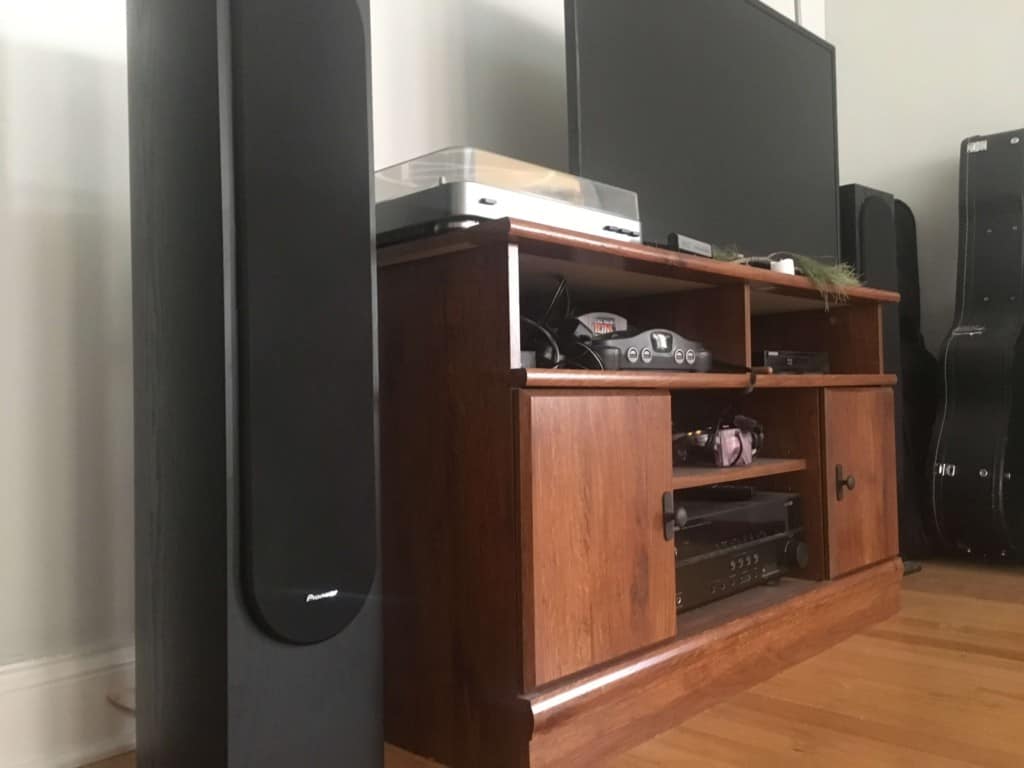
Alright, now let’s touch on window treatments.
3. You Want New Window Curtains / Blinds
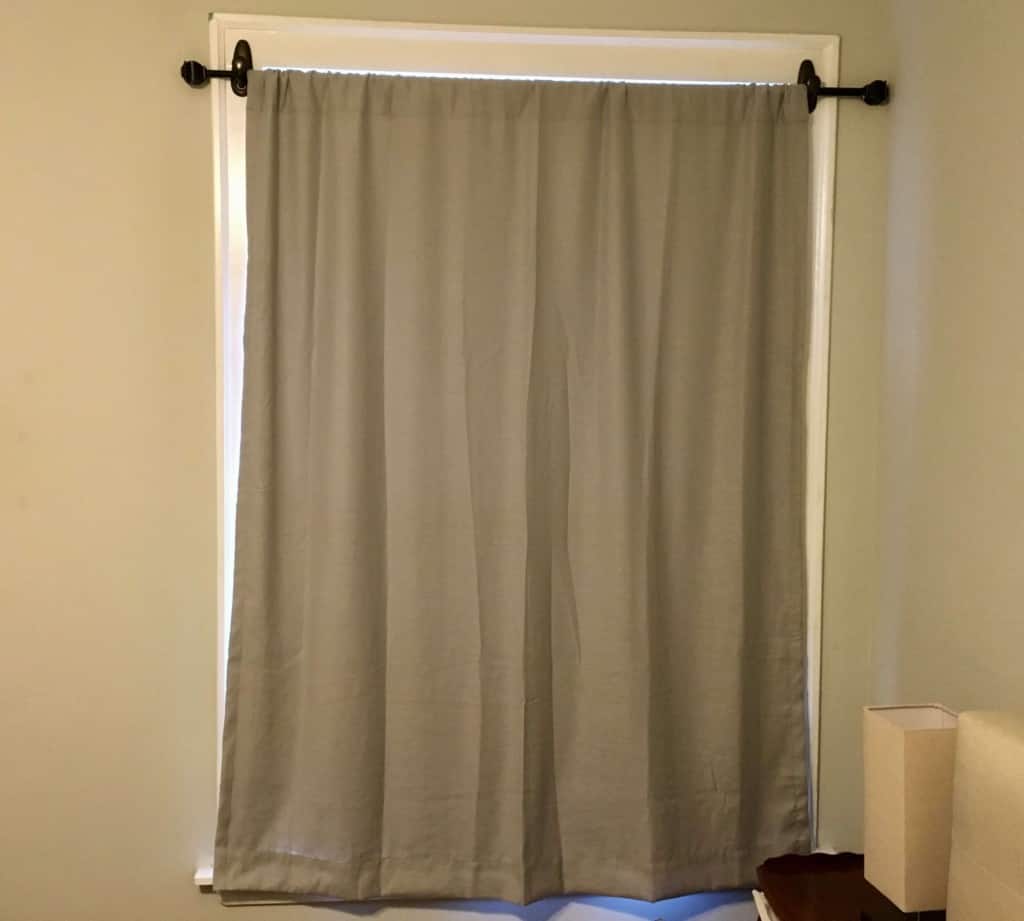
Apartments will typically feature the most generic, basic, and inexpensive window blinds that the landlord can purchase. This will save them money while still providing their tenants with the privacy that they require. However, this is not great for the design of your space.
As such, you may want to put holes in your apartment walls to either hang new blinds and/or put curtains up. While this will certainly spruce up rooms and make them more personal, we again have the problem of putting holes into walls and possibly into the window trim, which is hard to patch.
Curtains can also be a challenge to install, as you have to make sure the brackets on both sides (and sometimes the middle) are level, while also making sure that you drill properly into studs in the wall.
Most curtain rods will require you to drill at least three holes in the wall and up to six or seven. This is a lot of work to install and repair.
The good news is that Command Strips can often take care of this problem. They make adhesive hooks that come in a variety of modern colors/styles, and they are strong enough to hold the weight of your typical window curtains.
Check out these metallic bronze ones that we are using to hold up the black-out curtains in our bedroom.
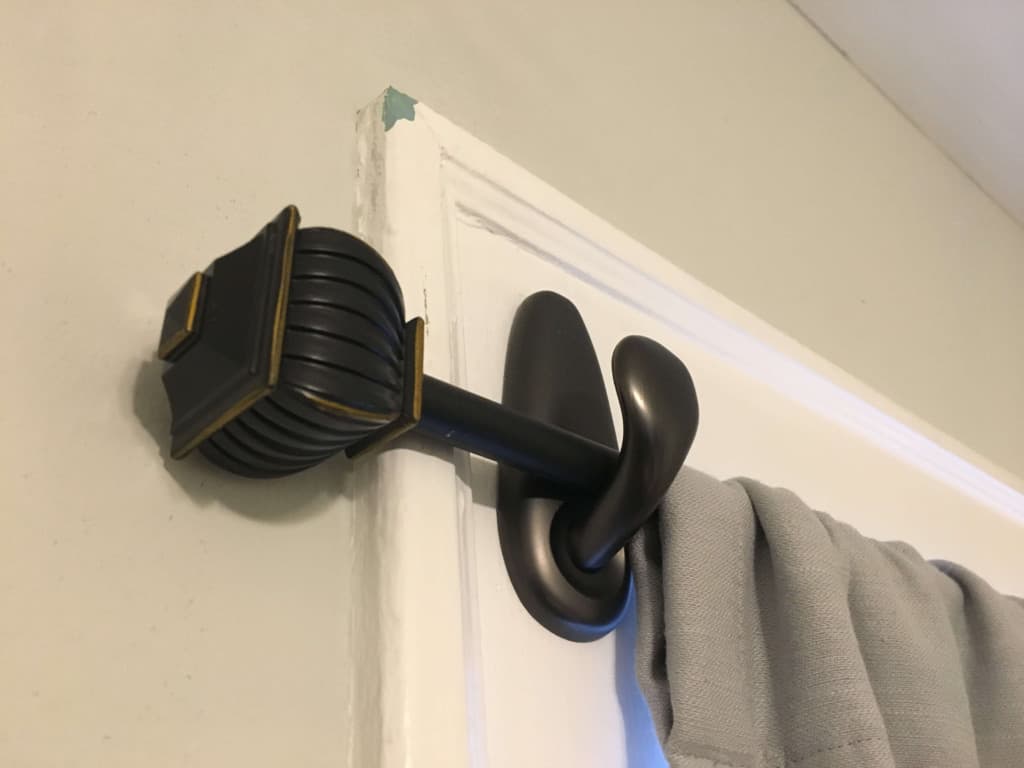
If you want to try something similar in your apartment, you can find this kind of Command Strip hooks on Amazon here. (note: we get commissions on Amazon sales at no extra cost to you).
How to Repair Holes in Your Apartment Walls
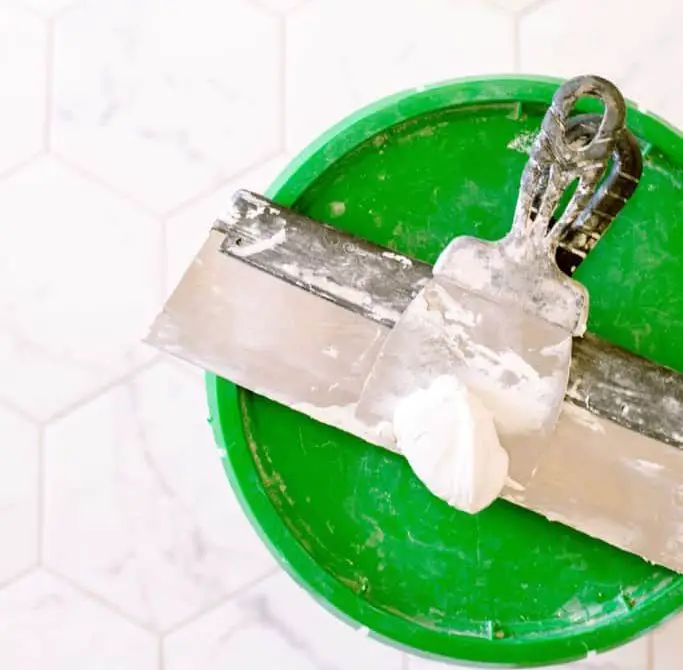
There is nothing wrong with wanting to put holes in your apartment walls. There are very legitimate reasons why you might want to do so.
You can usually put holes in apartment walls. However, if you do, it’s generally going to be your responsibility as a tenant to return the walls to their original condition.
If you don’t, then your property manager is likely to charge you or deduct the cost of the repair from your security deposit.
Here is a step-by-step guide to help you patch a hole in your apartment wall.
1. Gather Materials
If you’ve made holes in apartment walls that are drywall, then you’ll need to use sheetrock putty (also known as joint compound) and possibly even a patch of drywall.
If your apartment walls are plaster, then you’ll need to use veneer plaster and joint compound as well. For very small holes, you can also use white toothpaste as a DIY solution.
If you are patching holes you made in wood trim, you’ll have to use a wood filler product to fill in the holes. In all cases, once the product you use dries, you’ll need to sand the patch spot down so that it is even with the rest of the wall or trim.
So, here are the materials you will need to patch your hole. The links below will take you to products on Amazon and I might earn a commission if you choose to make a purchase using my link.
- Filling product (Filler for small holes on drywall, plaster, and wood, and drywall putty for large holes)
- Putty knife (See on Amazon)
- Patch (for larger holes, see on Amazon)
- Drywall sanding sponge (See on Amazon)
- Paint (color matched to your wall if your wall is a color other than white)
Don’t be intimidated by the process, patching a hole in your wall is actually pretty simple.
2. Clean the Wall
In order for the repair plaster to stick well, your wall needs to be clean and free of all dirt and dust.
To clean your wall you just need to wipe it down with some warm water and soap, even dish soap will do the job.
If you don’t need to patch or paint the whole wall, then you can just clean around the hole to prep it for patching.
Then, allow your wall to dry for several hours to ensure you’re not patching over a wet wall. If you want to be extra sure, come back and patch it the next day.
3. Patch the Hole
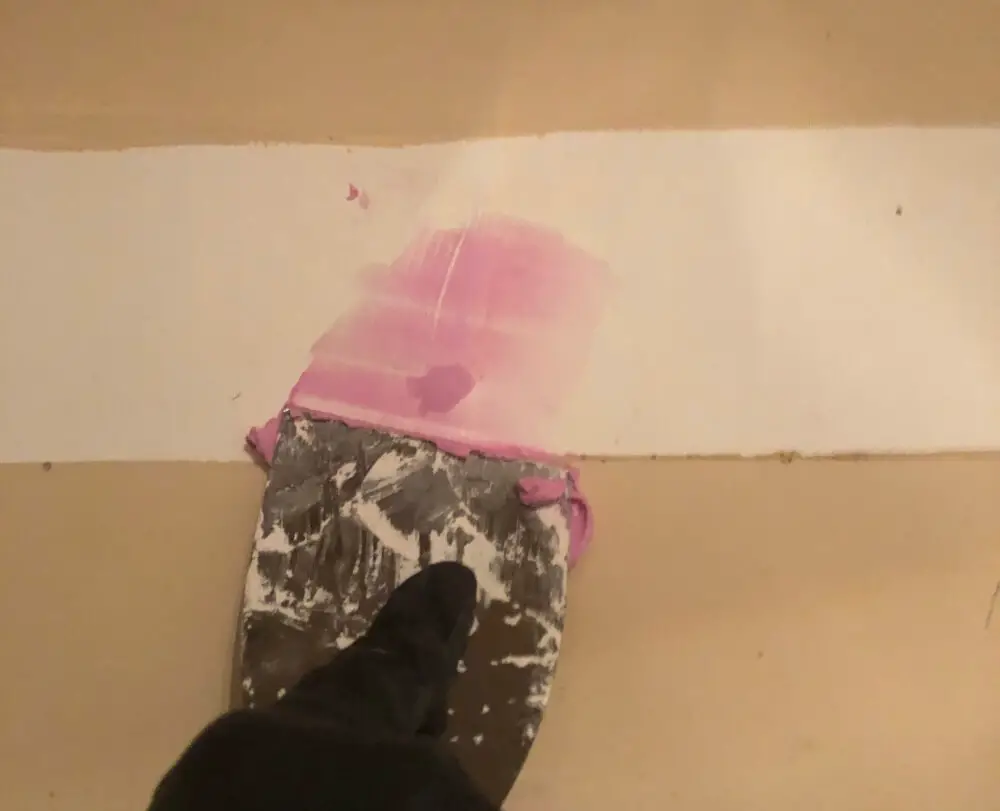
If you have tiny holes, you can use the patch stick I listed above, you just rub it across the hole until it is filled.
If you opted to get the classic putty and putty knife then this is how you patch it.
Get a small amount of the spackling paste on the putty knife and smear it across the hole. Then, using the flat edge, scrape and smooth any excess putty.
The excess putty will stick to the edge of the putty knife. YOu may have to do several passes in order to get the area smooth.
If you have a bigger hole, you’ll need to also use a drywall patch. Place a drywall patch over the hole so there is an overhang on all sides.
Secure the edges with a small amount of putty, then go over the entire patch and fill it with putty. Resist the urge to keep slathering putty on, it could get pushed through the mesh patch and do you no good.
Focus on getting putty across the entire surface for your first layer. Once it dries, you might have to come back and put on another layer to fully encase the mesh patch.
4. Let the Putty Dry
A lot of putty, like the one I linked above, now has a cool effect that makes it pink when it’s wet and turns white when it’s dry.
This makes it easy to tell when your putty is dry and ready for another layer or ready to sand.
If you don’t have this color-changing putty, you should wait at least 24 hours before you add more or try to sand it.
5. Sand the Putty
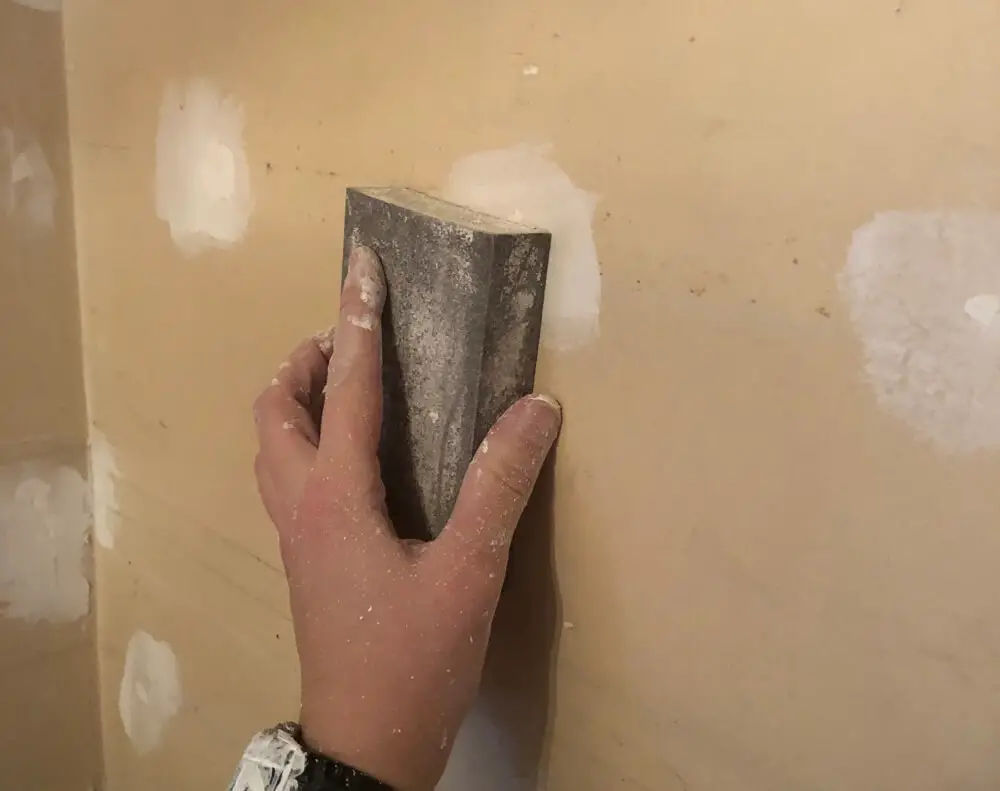
Once your putty is completely dry, you will need to sand it smooth so that it’s not noticeable.
Take your drywall sanding sponge and move it in circular motions across the patched area. Continue to do this until the surface is smooth and unnoticeable.
Don’t sand it down to the same level as the wall because then the hole may still be seen even though it is now filled.
6. Repeat as Needed
Some patches may need additional putty.
Once you sand the hole, add more putty if there are places where the hole is still noticeable. Allow it to dry, and then sand it again.
Repeat this until your hole is no longer visible.
7. Paint Over the Patch
Once you repair the holes in the walls, you will also want to match the paint color of the wall so that you can hide the patch with a little paint.
If your wall is white then you probably don’t need to paint it as long as you can’t easily see the patch.
But, if you do need to paint it, you need to be careful with this step and you’ll need to do your best to make the hole invisible.
Use a small paintbrush and paint over the patched area. To make the new paint less noticeable, feather the new paint out across the wall in a large area than the patch so it blends in with the old paint.
Some apartments have strict rules about painting, and if your patch stands out (in a bad way), they could potentially charge you to repaint the entire wall (or apartment). I’m not trying to scare you, but you should be aware so that you can be careful to avoid that situation.
Apartment Security Deposits and How They Work

Most landlords will charge their tenants what’s called a security deposit before they are able to move into their rental property.
This provides the landlord with financial and property protection in the case that you either don’t pay your rent or you do damage to your apartment that they need to fix when you leave.
How much you will pay for a security deposit depends on the landlord. There is no set amount that all landlords will charge, but it’s usually based on what the monthly rent is.
In most cases, your security deposit will be equivalent to between 1 and 2 months’ rent. It may also be higher if you have a low credit score and/or if you have any pets in your apartment.
When landlords collect a security deposit, they will hold that money in a bank account until you leave the apartment. Once they asses the condition of the apartment after you leave, they will make a determination of the condition of the apartment.
If there are repairs that need to be made, they will take the repair costs out of your security deposit and return the rest to you in the form of a check (most of the time).
Normal wear and tear in an apartment will not count against you. Instead, things that you actively do to the apartment (like putting holes in the apartment walls) will be taken into consideration when landlords assess your security deposit.
Related Questions
Can Landlord Charge for Nail Holes?
A landlord can charge for nail holes or they may deduct a portion of the tenant’s security deposit to repair wall damage. However, not all landlords will actually charge for nail holes, especially if the holes are very small or unnoticeable. You can check your lease agreement for more details.
Do You Need to Fill Holes When Moving?
When you move out of an apartment, you will typically need to fill any holes that you’ve put into the walls. However, some landlords are lenient or have different policies, and may not require you to fill any small holes (such as nail-holes). Consult your rental contract or landlord to get clarity on the expectations.
Can I Replace the Shower Head in My Apartment?
You can generally change the shower head in an apartment, but you should be sure to keep the original shower head and reinstall it before moving out. Before changing the shower head, you should also check your lease to make sure there are not any clauses that prohibit this type of change.
Are Landlords Responsible for Replacing Air Filters?
Renters are usually expected to replace air filters themselves. This includes the purchase of the filters, although many landlords will provide a couple of extra filters as a courtesy. There are some variations, however, and you should check your lease for specific expectations.
